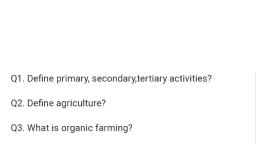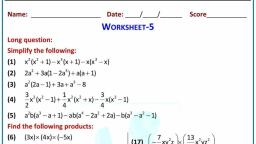Question Text
Question 1 :
Using second law of motion, derive the relation between force and acceleration. A bullet of 10 g strikes a sand-bag at a speed of $10^{3}ms^{-1}$ and gets embedded after travelling 5 cm. Calculate the resistive force exerted by the sand on the bullet
Question 2 :
How much momentum will a dumb-bell of mass 10 kg transfer to the floor if it falls from a height of 80 cm? Take it's downward acceleration to be 10 $ms^{-2}$.
Question 3 :
Water sprinkler used for grass lawns begins to rotate as soon as the water is supplied. Explain the principle on which it works.
Question 5 :
A truck starts from rest and rolls down a hill with a constant acceleration. It travels a distance of 400 m in 20 s. What is the force acting on it if its mass is 7 tonnes?
Question 6 :
An object of mass 2 kg is sliding with a constant velocity of $4ms^{-1}$ on a frictionless horizontal table. The force required to keep the object moving with the same velocity is
Question 7 :
An automobile vehicle has a mass of 1500 kg. What must be the force between the vehicle and road if the vehicle is to be stopped with a negative acceleration of 1.7 $ms^{-2}$?
Question 8 :
A water tanker filled up to $\frac{2}{3}$ of its height is moving with a uniform speed. On sudden application of the brake, the water in the tank would ______.
Question 9 :
<img style='object-fit:contain' src='https://teachmint.storage.googleapis.com/question_assets/cbse_ncert/61b1d2e3f59b460d7261f64d.jpg' />
The above image is the distance-time table of an object in motion. What conclusion can you draw about the acceleration? Is it constant, increasing, decreasing, or zero?
Question 10 :
A hammer of mass 500 g, moving at 50 $ms^{-1}$, strikes a nail. The nail stops the hammer in a very short time of 0.01 s. What is the force of the nail on the hammer?

























